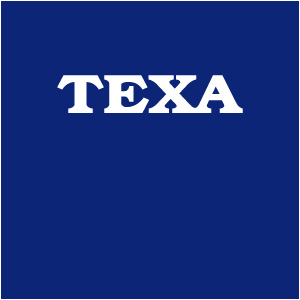OZÔNIO COVID-19
HIGIENIZAÇÃO ATRAVÉS DE TRATAMENTO DE OZÔNIO
Uma série de testes rigorosos realizados pelo Laboratório do Departamento de Medicina Molecular da Universidade de Pádua destacou que, usando o programa específico “Covid-19” no aplicativo AIR2 SAN, a ferramenta TEXA é 99,99% virucida contra SARS-Cov -2.
Outros testes de laboratório realizados pelo Departamento de Ciências Químicas, Farmacêuticas e Agrícolas da Universidade de Ferrara mostraram que o AIR2 SAN também é virucida contra o Coronavírus 229E humano. O AIR2 SAN provou ser altamente bactericida também contra o Staphylococcus Aureus, Escherichia Coli e Pseudomonas Aeruginosa.
Na Itália, o ozônio foi reconhecido como um dispositivo natural para a esterilização de ambientes contaminados por bactérias, vírus, esporos, etc. pelo Ministério da Saúde com o protocolo nº. 24482 de 31 de julho de 1996 e como agente desinfetante no processamento do ar e da água com CNSA de 27 de outubro de 2010. Ozônio como agente antimicrobiano e princípio ativo para higienização de superfícies. http://www.salute.gov.it/imgs/C_17_pubblicazioni_1514_allegato.pdf
O recente relatório do Instituto Italiano de Saúde ISS COVID-19 no. 25/2020 “Recomendações provisórias sobre limpeza e desinfecção de ambientes não relacionados à saúde durante a emergência de saúde do COVID-19: superfícies, ambientes internos e roupas. Versão de 15 de maio de 2020” confirma o uso do ozônio para a higienização de ambientes, considerando-o eficaz contra bactérias, vírus, etc.
O ozônio gerado in situ a partir do oxigênio é uma substância ativa com efeito “biocida” em revisão de acordo com o BPR2 como desinfetante de superfícies e água potável e para uso em torres de resfriamento de plantas industriais. Embora a avaliação não tenha sido concluída, uma ampla base de dados está disponível que confirma sua eficácia microbicida mesmo contra vírus.
A atividade virucida do ozônio é rapidamente realizada após uma ozonização. Quanto a muitos outros produtos usados para desinfecção, não há informações específicas sobre a eficácia contra o SARS-COV-2. Por outro lado, existem vários estudos que apoiam a sua eficácia virucida (Norovírus) em ambientes de saúde e não assistenciais. Mesmo em baixas concentrações, com alta umidade, o ozônio tem um alto efeito desinfetante e virucida no ar.
A Associação Internacional de Ozônio confirma que “o ozônio é altamente eficaz para a inativação de muitos vírus” (https://www.ioa-pag.org/resources/Documents/EOC%20Files/IOA%20Coronavirus%20Statement.pdf)
Com base em um estudo relatado no Thailand Medical News, “foi comprovado que o gás ozônio mata o coronavírus SARS e como a estrutura do novo coronavírus 2019-nCoV é quase idêntica à do coronavírus SARS, é relativamente seguro dizer que também funcionará no novo coronavírus”. Deve-se notar, porém, que não há estudos até o momento, exceto um que está atualmente em andamento na China, no Instituto de Virologia em Hubei.
https://www.thailandmedical.news/news/ozone-can-be-used-to-destroy-the-new-coronavirus-and-disinfect-areas?fbclid=IwAR0jfamrUhEqr4sjfsS-Ql8lhWlNYGoyQSw-P-4Xr_OgV1BiPelQo1_VHBE
PROTOCOLOS LANÇADOS NA ITÁLIA
• Universidade de Nápoles “Federico II”
testes in vitro sobre o poder inativador do oxigênio nascente contra enterobactérias patogênicas e ausência de mutações genéticas
• Universidade de Udine – Departamento de Ciência dos Alimentos, prot. 219/94
testes de descontaminação de salmonela – listeria em superfícies planas de equipamentos usados para processamento de carnes
• Universidade de Parma – Instituto de Microbiologia
testes de verificação das propriedades esterilizantes em colônias bacterianas de e. coli – s. aureus – ps. aeruginosa – s. durans
• Ministério da Saúde, Instituto Italiano de Saúde (ISS) – Departamento de Alimentação, Nutrição e Saúde Veterinária, protocolo no. 24482 de 31/07/96
VALIDAÇÕES INTERNACIONAIS
• 1976 EPA Environmental Protection Agency (EUA)
• 1982 IBWA International Bottled Water Association (EUA)
• Departamento de Agricultura do USDA de 1999 (EUA)
• 2001 FDA Food and Drug Administration (EUA)
• 2002 NOP National Organic Program (EUA)
• 2003 EFSA Autoridade Europeia de Segurança Alimentar (UE)
• Regulamento de Produtos Biocidas BPR de 2012 (UE)
• 2018 ECHA European Chemicals Agency (UE), em processo de aprovação
INATIVAÇÃO DO NOVO CORONAVÍRUS PELO OZÔNIO CONFIRMADA
O primeiro estudo sobre ozônio e Covid-19 ocorreu no início de junho.
A Nara Medical University e o MBT Consortium confirmaram a inativação do novo coronavírus por meio da exposição ao gás ozônio.
Fundada em 1945, a Nara Medical University é uma Faculdade de Medicina no Japão. Os dois professores que orientaram o estudo são Toshikazu Yano, Diretor de Doenças Infecciosas, e Takashi Kasahara.
Graças aos seus laboratórios e equipamentos, os cientistas conseguiram provar que, quando expostos à saturação correta de ozônio por um período de tempo adequado, o coronavírus é inativado e não mais infeccioso.


